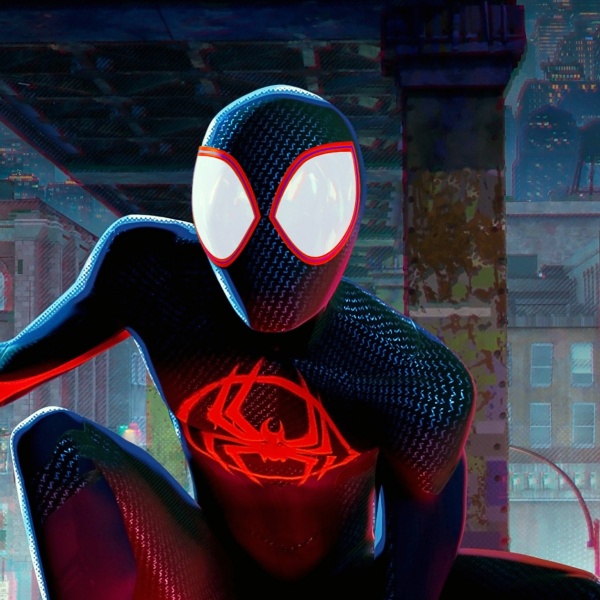
In “Rio,” it’s easy to get lost in the colorful characters and propulsive (not to mention rigidly straightforward) plot. The tale of a dislodged bird named Blu (Jesse Eisenberg) sent to South America to mate with another member of his extremely rare species (played by Anne Hathaway), is full of the kind of visual wonder that does a lot to dazzle, especially if you see it in 3D, where the birds (and other jungle wildlife) zoom out at you and into your lap. But if you pause longer than the movie ever does to think about what is actually going on, then you’ll almost certainly become unglued and disinterested. For a movie this amazingly active, it’s also quite plodding.
The movie opens with a nifty, Busby Berkley-esque musical number, introducing us to the wild, multicolored world of Brazil. It’s here that we see a young hatchling fall from its nest and get scooped up by unscrupulous poachers. We then quickly cut to Minnesota, where a truck carrying those birds accidentally drops part of its cargo – the same, cerulean bird from the opening. A young girl (eventually voiced by Leslie Mann) scoops up the orphaned bird and, thanks to a handy montage that plays while the credits roll, we learn that they have become the best of friends. She grows up and runs a bookstore, which gives the bird (the appropriately nebbish Eisenberg) a chance to read up on all the world has to offer without ever going anywhere. It’s an apt metaphor for the movie, actually, with its intellectually rich design work but meandering plot.

But when a scientist (Rodrigo Santoro) visits the bookstore (it’s never really explained how he found out about the bird or the bookstore) and explains how important young Blu is to the species, well, she has no choice but to accompany the bird to South America. Of course, the mate they have picked out for Blu, named Jewel (Hathaway, sounding painfully exuberant even in animated form) is a bit of a handful and uninterested in a romantic relationship.
There’s also a poacher who sends his villainous cockatoo (Jemaine Clement) to kidnap the pair, which leads the two birds to be chained together and released into the wilderness. It’s a typical odd couple pairing – she’s a free spirit who loves the great outdoors while he’s a nerdy intellectual who can’t even fly – and for a while there’s enough interest in the way that the two characters clash to overlook the obvious deficiencies in both the story and the way said story is told.
Once the characters enter the wild, though, and the movie devolves into a series of occasionally jubilant, mostly repetitive episodes involving other birds (including a pair of jive-talking wise-asses played by Will.i.am and Jamie Foxx), things really fall apart. The romantic center of the film gives way to a frantic series of glittery set pieces, and we spend just as much time with the human characters (frantically searching for the birds) as we do with the feathered creatures themselves.
What’s particularly weird is the movie’s casual sexuality, particularly in the climactic Carnival sequences, where our dowdy human female (a bookstore owner, no less) struts her stuff in a sequined bikini while other, semi-nude dancers parade around her. Yet the movie doggedly abstains from engaging in the central premise of the movie which is that these birds have to, you know, fuck to save their species. (To think that this derailed the similarly themed Pixar project “Newt” is almost too much to bear.) Apparently these elements got the movie slapped with a PG rating, with the animation studio having to resubmit the film for a G, which it secured, amazingly.
It’s also not apparent from the barrage of marketing materials (including the “Rio”-themed version of “Angry Birds”) that it’s a sort-of musical, with characters occasionally bursting into song. The song Clement sings sounds like something from the never-realized third season of the “Flight of the Conchords” series, but these are mostly just background music – jazzy embellishments that don’t do much in the way of character development or plot advancement. We’re still trying to figure out what the Hathaway character was all about; clearly this is a waste of time.
The film’s director, Carlos Saldanha, is from Rio, and he’s described the film as a dream project. You can tell that he loves his native country, with swooping shots of people (tourists?) enjoying everything Rio has to offer – mountain climbing, paragliding, and sunny beaches. Even the slums carry a cartoonish charm (“Manda Bala” it’s not). And occasionally you can get taken in by the sheer volume of the visuals – the amount of characters and colors that often cloud the screen is sometimes genuinely overwhelming, even if the 3D has a been-there, done-that redundancy (especially after more soaring flight sequences in “Avatar” and last spring’s “How to Train Your Dragon“). But in the end, the pageantry is more akin to these bird’s feathers – a sophisticated defense mechanism used to distract, rather than engage. [C]




